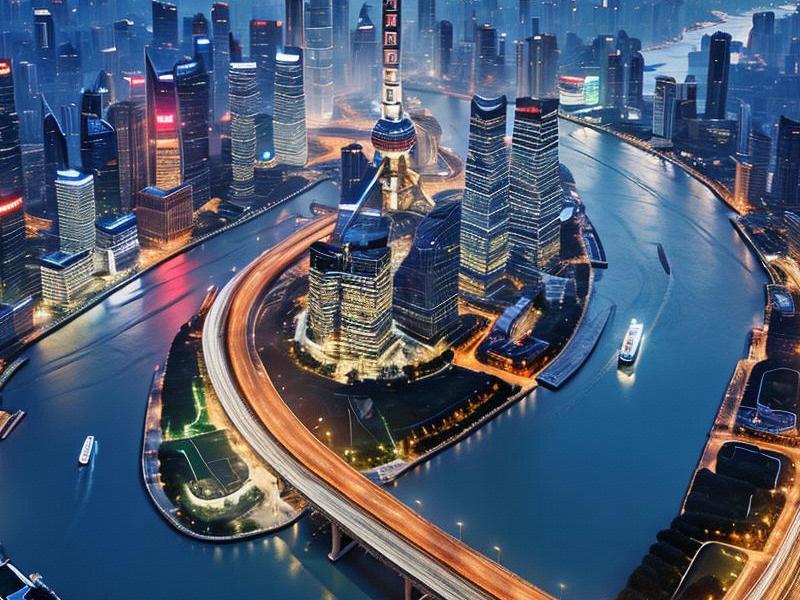Shanghai and Its Surrounding Areas: A Comprehensive Overview
⏱ 2025-04-24 20:36 🔖 上海娱乐千花坊联盟
📢0℃

Nestled along the eastern coast of China, Shanghai stands as a beacon of modernity and progress. As the largest city in the country, it is renowned for its towering skyscrapers, bustling streets, and vibrant international atmosphere. However, Shanghai's story is not just confined to its own boundaries; it extends to the surrounding areas that form an integral part of its urban ecosystem.
The surrounding areas of Shanghai, including cities like Suzhou, Hangzhou, Ningbo, and Wuxi, are no less significant. These cities, collectively known as the Yangtze River Delta (YRD) region, are hubs of economic activity, cultural richness, and historical significance. Together, they crteeaa tapestry of urbanization that is both diverse and interconnected.
One of the most striking features of Shanghai and its surrounding areas is the rapid pace of urban development. Shanghai, in particular, has undergone a remarkable transformation over the past few decades. Once a colonial port city, it has evolved into a global financial center, attracting millions of residents and visitors from around the world. The iconic skyline of Pudong, with its gleaming skyscrapers like the Oriental Pearl Tower and the Shanghai Tower, symbolizes this transformation.
However, the story of urban development is not limited to Shanghai alone. The surrounding cities have also experienced significant growth, albeit with their own unique characteristics. Suzhou, for instance, is renowned for its classical gardens and traditional Chinese architecture. Despite its rich cultural heritage, Suzhou has embraced modernity, becoming a hub for high-tech industries and innovation. Similarly, Hangzhou, home to the famous West Lake, has leveraged its natural beauty and historical significance to attract tourists and investors alike.
上海贵族宝贝龙凤楼
The economic integration of Shanghai and its surrounding areas is another fascinating aspect of this region. The YRD region is one of the most economically developed areas in China, contributing a significant portion of the country's GDP. This economic powerhouse is characterized by a highly integrated supply chain, advanced manufacturing, and a thriving service sector. Shanghai serves as the financial and commercial hub, while the surrounding cities specialize in various industries such as technology, logistics, and tourism.
The integration of these cities is facilitated by an extensive network of transportation infrastructure. The Shanghai Metro system, one of the most extensive in the world, connects the city with its neighboring areas, enabling seamless movement of people and goods. Additionally, the region is crisscrossed by highways, railways, and waterways, further enhancing connectivity. This infrastructure not only supports economic activities but also fosters cultural exchange and collaboration among the cities.
Cultural heritage plays a vital role in shaping the identity of Shanghai and its surrounding areas. Shanghai, with its unique blend of Chinese and Western influences, offers a fascinating cultural experience. The Bund, a historic waterfront promenade, showcases the city's colonial past, while the French Concession preserves the charm of its European architecture. The city's vibrant art scene, with galleries, theaters, and music venues, reflects its cosmopolitan character.
上海贵族宝贝sh1314
The surrounding cities are equally rich in cultural heritage. Suzhou, often referred to as the "Venice of the East," is famous for its classical gardens, which are UNESCO World Heritage Sites. These gardens, with their intricate designs and serene landscapes, offer a glimpse into the traditional Chinese philosophy of harmony between nature and humanity. Hangzhou, on the other hand, is renowned for its beautiful West Lake, a UNESCO World Heritage Site that has inspired poets, painters, and philosophers for centuries.
Despite their rapid urbanization, Shanghai and its surrounding areas have made significant efforts to preserve their cultural heritage. Initiatives such as cultural festivals, heritage conservation projects, and historical preservation laws aim to safeguard the region's rich history and traditions. These efforts not only enhance the quality of life for residents but also attract tourists from around the world, contributing to the local economy.
The environmental challenges associated with urbanization are a critical concern for Shanghai and its surrounding areas. The rapid growth of cities has led to issues such as air pollution, water scarcity, and waste management. However, the region has taken proactive measures to address these challenges. Shanghai, for instance, has implemented strict regulations on industrial emissions and promotes the use of renewable energy sources. The city is also investing in green infrastructure, such as parks and urban forests, to improve air quality and enhance the living environment.
上海夜网论坛
The surrounding cities have also adopted sustainable development practices. Suzhou, for example, has developed a comprehensive urban planning strategy that prioritizes environmental protection and resource conservation. The city has implemented measures to reduce water pollution, promote energy efficiency, and encourage the use of public transportation. Similarly, Hangzhou has taken significant steps to address air pollution, including the promotion of electric vehicles and the development of green spaces.
The future of Shanghai and its surrounding areas lies in their ability to balance economic growth with environmental sustainability. The region is at the forefront of China's efforts to achieve carbon neutrality and promote green development. Initiatives such as the Yangtze River Delta Integration Plan aim to enhance regional cooperation and coordination, fostering a more sustainable and resilient future.
In conclusion, Shanghai and its surrounding areas represent a unique blend of urban development, cultural heritage, and economic integration. The region's rapid growth and transformation have made it a global powerhouse, while its efforts to preserve cultural heritage and address environmental challenges highlight its commitment to sustainable development. As the YRD region continues to evolve, it will undoubtedly play a pivotal role in shaping the future of China and the world.
Shanghai's Digital Muse: How Tech-Savvy Women are Redefining Femininity in the Megacity【霓虹记忆】上海娱乐会所30年浮沉录Shanghai 5200: Quantum Symbiosis Nexus and the Photonic Civilization Matrix【霓虹与素笺】上海女性审美变迁录(1920-2025)Shanghai's Journey to Becoming a Global Innovation Hub【上海女儿】从百乐门到BFC:三代沪上名媛的衣香鬓影录Shanghai 5300: Quantum Symbiosis Nexus and the Photonic Civilization Matrix【虹桥纪事】上海西大门的百年流量密码Shanghai 5350: Quantum Leisure Singularity and the Galactic Nightlife Matrix【梧桐密码】——解码上海街区的十二层时空褶皱

